This past Saturday my son and I volunteered to help the folks from the Elizabeth River Project (ERP) at the new Paradise Creek Nature Park in Portsmouth, Virginia. Paradise Creek is small tributary of the Elizabeth River, and is one of the most polluted and abused creeks flowing into one of the most polluted and abused rivers in the country. But through the efforts of ERP, and others, things have slowly been getting better for the Elizabeth and it is a healthier river than it once was, but with a long way to go to ERP's goal of a fishable, swimmable river by 2020.
Paradise Creek lies just south of the Norfolk Naval Shipyard, the oldest and largest industrial facility belonging to the U. S. Navy. The area has a long history of being the dumping place for what was not needed and eventually became a significant EPA Superfund site. The land that is becoming Paradise Creek Nature Park was once a vibrant tidal marsh, but over the years became a home for various unwanted materials, including the dredge spoils created by keeping the Elizabeth deep enough for large ships to navigate. By the time the dumping ceased, the site ended up with an unusually high elevation offering a nice view of the creek, and a forest of opportunistic species, natives and invasive exotics both, began to grow.
As part of a larger effort to restore Paradise Creek and the surrounding land, the park is being created and should open to the public by the end of the year. We were there to plant trees, or more specifically to dig holes for other people to come in behind us and plant trees, all of them native species. After we did our digging, we took a stroll around the park before we had to go. I think what struck me the most about the park is its juxtaposition to its industrial neighbors, many of whom have cleaned up their own properties and changed the way they conduct business next to the river. If everyone is brought on board and works together, making changes is an easier proposition.
I think this species of Ligustrum is L. lucidum. It is not as invasive as L. sinense, but close. The park has
impressive tree-like stands of it dripping with fruit.
The two most noxious ivies were also present, the invasive Hedera helix (English Ivy) and our own native Toxicodendron radicans (Poison Ivy), an itchy surprise awaiting anyone wanting a closer look at its beautiful fall colors.
The pink flagging tape and string were strung over the top of a recreated wetland in order to keep Canada geese from eating what is likely newly planted Spartina alterniflora. This area was part of an agreement that allowed a company to partially atone for previous environmental sins by reverting ten acres of accumulated spoil back to marsh, the site's original environmental niche.
November 18, 2012
Subscribe to:
Post Comments (Atom)
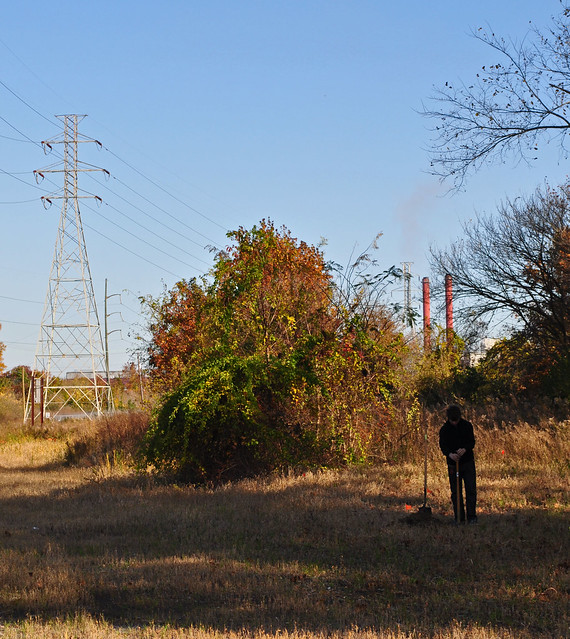

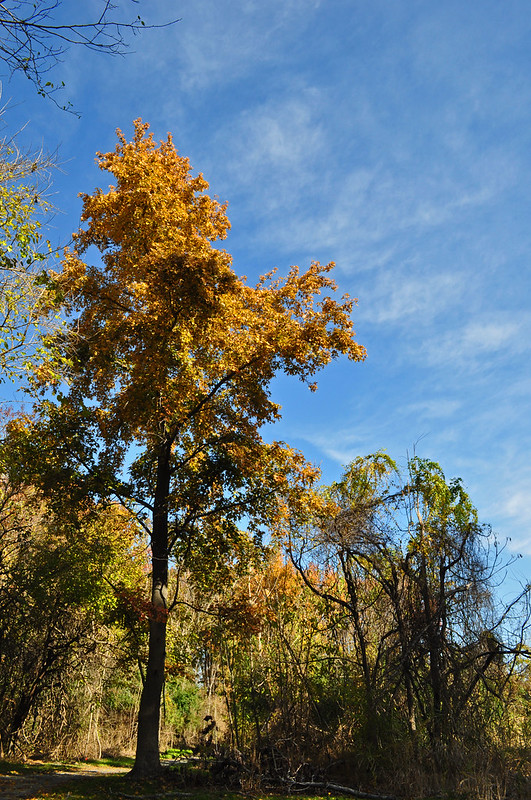
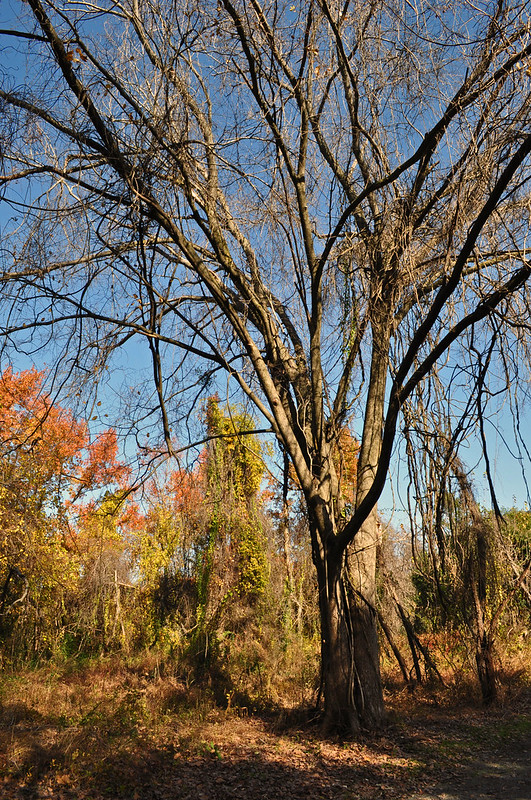


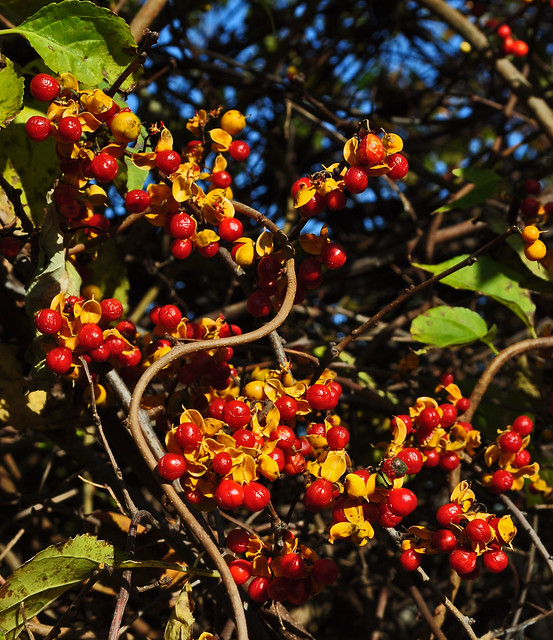



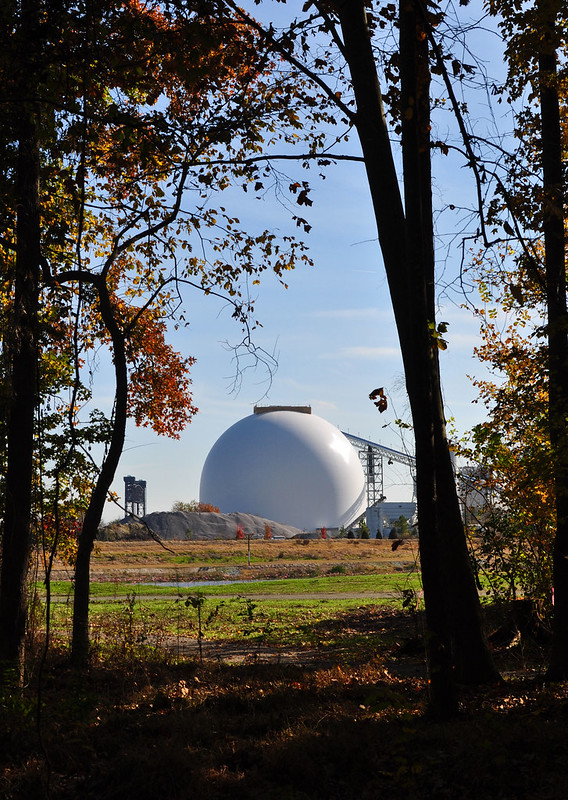
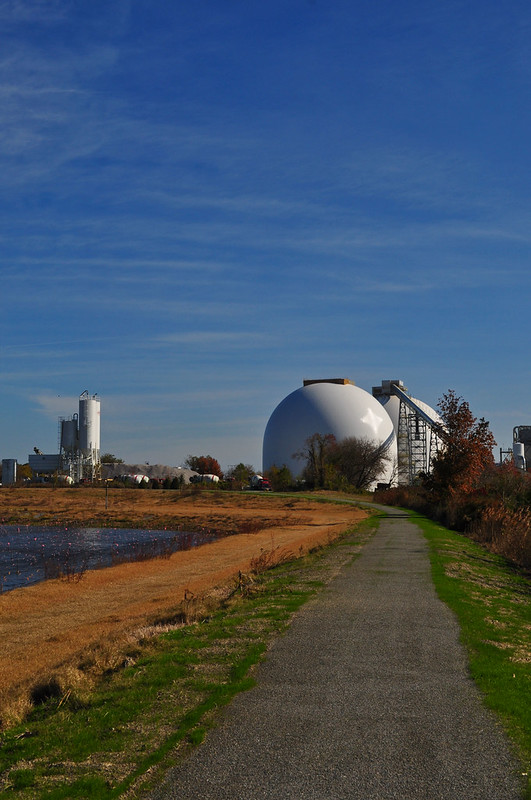
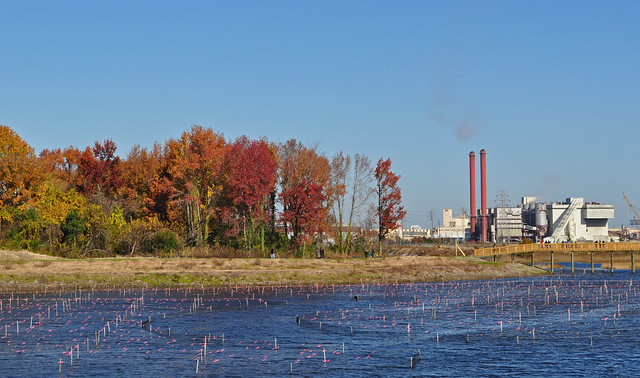
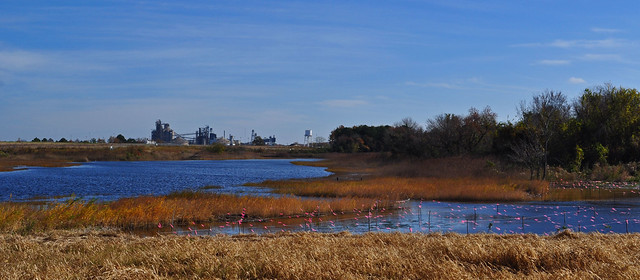

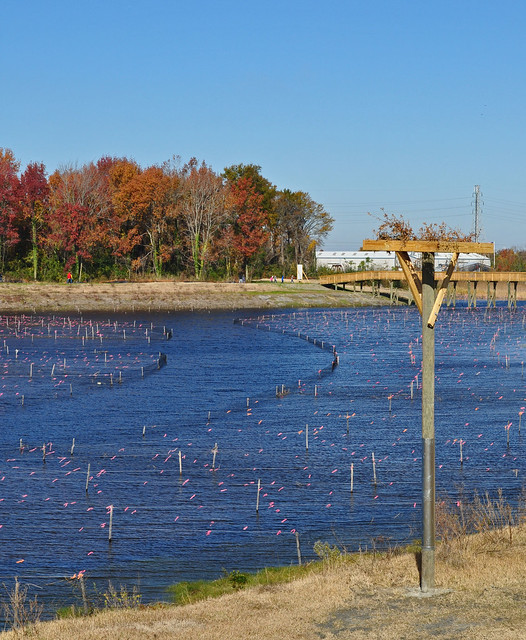




Nice that the park is getting some more planting.
ReplyDeleteSo pink flags keep Canada geese away? Tell those guys at Langley. haha
Sigh ... what we've done to this poor tired planet.
ReplyDeleteThanks for helping make some of it right again.
Good post, and good for you and your son helping out with this project. This is the sort of thing that makes me feel hopeful.
ReplyDeleteIt's a long hard process as I know from my invasive species project in Maine, but the best way to help is to stop talking and get out there and do something like you and your son. If the environment is to be saved for humans, and I have my doubts, it will be because of millions of little steps not some big government plan (although that would help too).
ReplyDeleteExcellent post. Hope the area all comes back together again and that there are people who care to have it all restored back to what it was originally. I can't believe that we allow companies to screw up areas in the first place....but with the efforts of people we can get some of these areas back up and running again.
ReplyDeleteSo I come away feeling more positive about the fact that people are trying to make the system whole again. I don't think people went out of their way to trash the environment. It was just an era when the resources seemed endless and the land seemed forgiving. Hopefully we've learned something in the interim.
ReplyDeleteNice job for all involved. We need an effort such as this for the Niagara River. The Upper River is home to all the chemical plants.
ReplyDeleteThat is a really inspirational project, am glad to read that the polluters are indeed paying, in restored beauty and bio diversity.
ReplyDeleteYou're teaching your son that every day is Earth Day as your father taught you. Bravo!
ReplyDeleteJanet,
ReplyDeleteI don't think the color matters, but if it does I know people trying to rid themselves of Canadas would not care.
Sybil,
I sigh with you, but haven't given up, yet.
Jason,
It gives me hope as well.
Carolyn,
Maybe little steps and a big govt. plan.
Rohrerbot,
The people who are behind this effort are very motivated, very well-connected and have done a great job in committing many different players to the effort.
John,
I like to think that the most obvious transgressions have stopped, to a point. Now it is just time to clean up and preserve what has not been destroyed.
Donna,
I think it would surprise most people to know how abused the Niagara has been.
Janet,
I think making them help right things is much better than a fine.
Annie,
I try not to be so direct, just hoping absorption takes place.
Les